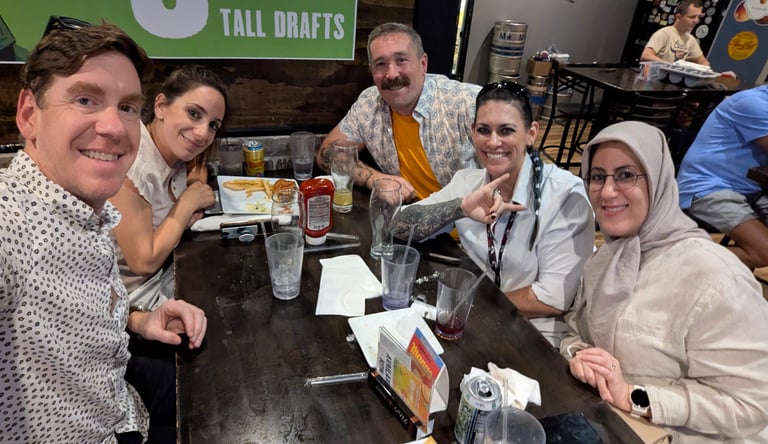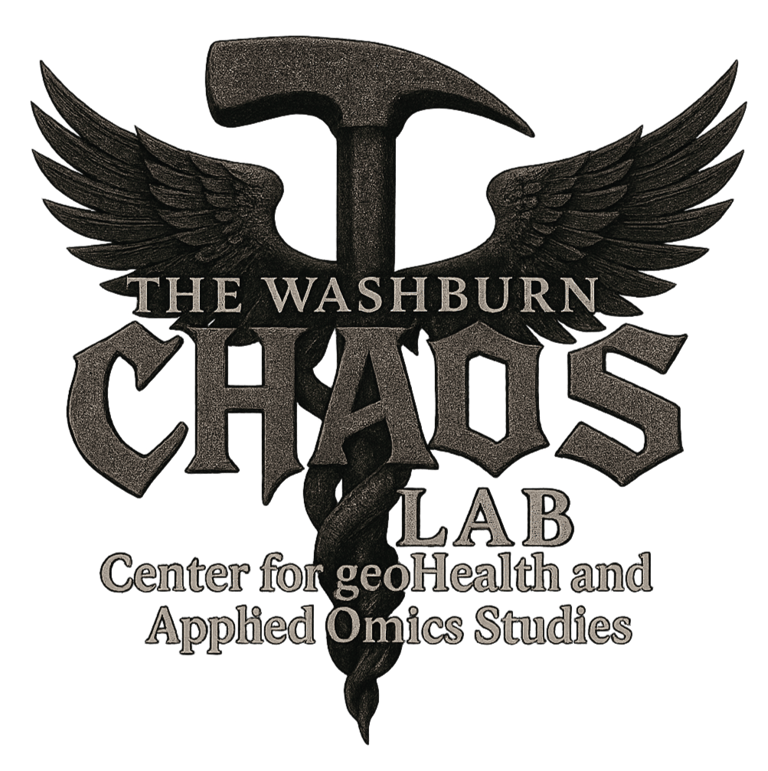Chaos in Grand Rapids: ASP Annual Meeting Recap
The ASP 2025 meeting in Grand Rapids was a whirlwind of science, serendipity, and unapologetic nerding out — from coral and algae bioactives to biosynthetic wizardry, scuba dives, and good old-fashioned networking. I presented the Kentucky Microbe Map, our statewide, open-access tool linking microbial diversity to geology for natural products discovery and hazard forecasting. Left with a notebook full of new contacts, wild collaboration ideas, and proof that science is metal — and sometimes coral, kelp, and sci-fi.
SCIENTIFIC CONFERENCEPHARMACOGNOSYCOLLABORATIONMICROBIOME MAP
8/14/20252 min read
You know that moment when you walk into a room and realize you’re surrounded by your people—the kind who can have a serious debate about whether a slime mold qualifies as a legitimate drug discovery pipeline… while also arguing about which organism would make the best sci-fi/horror monster? Yeah. That was the American Society of Pharmacognosy annual meeting this year. This year’s gathering in Grand Rapids was a kaleidoscope of science — corals and algae from the Caribbean and Gulf, scuba dives with GoPros and sampling kits, biosynthetic pathway wizardry, synthetic biology pipelines, and enough analytical chemistry to make any mass spec sing.
And it wasn’t just science. We nerded out over science fiction and horror, compared metal band setlists, and got into at least one semi-serious debate over who would win: Kirk or Picard. (Yes, I am a nerd. No, I am not ashamed. And for the record, I’m not picking sides unless someone buys me pie first.)
I was there to present the Kentucky Microbe Map — a statewide, open-access geospatial database that pulls together microbial diversity data from every corner (and subsurface) of the Commonwealth. We’re talking soils, rivers, karst springs, caves, mines, groundwater, and exposed bedrock. It’s a mashup of new KGS fieldwork with decades of journal records, agency reports, and archived datasets, all stitched into a living, searchable map. The goal? To point the way to high-potential sites for natural product discovery, pathogen forecasting, and microbial monitoring — from tracking harmful algal blooms to predicting post-disaster infection spikes.
Compared to most of the conference abstracts, my project was… different. Not in the “what is this person even doing here” sense, but in the “oh, we haven’t seen this before” way. Most microbiology and mapping projects on the program were zoomed in: a specific reef’s symbionts, an algal bloom’s chemical fingerprint, a single mangrove forest’s microbial profile. All incredible work. But the Microbe Map? It’s deliberately wide-angle, uniting multiple ecosystems and decades of data into a single tool. It’s statewide-scale microbial cartography with one foot in pharmacognosy and the other in environmental health.
And here’s the best part — the networking. Within minutes of finishing my talk, I was deep in conversations with coral chemists, algal metabolomics folks, and synthetic biologists. Could we adapt the mapping framework to visualize reef bioactive hotspots? Track metabolite shifts across algal blooms? Feed marine microbiome data into hazard forecasting models? Suddenly, people were talking collaborative ideas, how to make the map better, and what they can do with it. This drove home what I love about ASP: no matter how different our source material — a coral reef, a fungal endophyte, a cave wall — we’re all chasing the same thing: how to find, understand, and use the chemistry of living systems.
Grand Rapids, you were a whirlwind of science and serendipity. Now the CHAOS Lab is back home with a pile of new contacts, a notebook full of schemes, and a burning urge to keep connecting the dots — and the microbes — across maps, disciplines, and ecosystems. Science is chaos, kids. And sometimes, it’s also coral, kelp, GIS layers, sci-fi debates, and a whole lot of caffeine.


Mapping microbes, making waves, and proving science is chaos.


